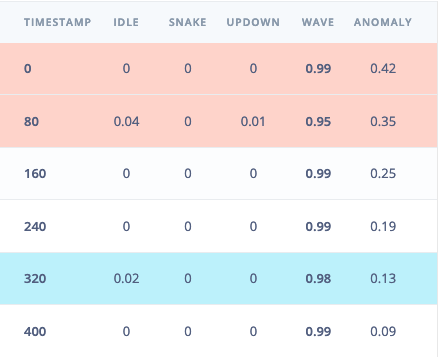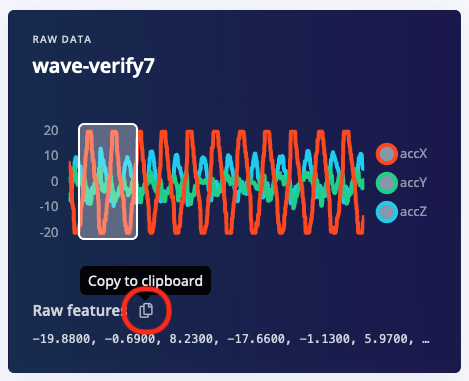Impulses can be deployed as a C++ library. This packages all your signal processing blocks, configuration and learning blocks up into a single package. You can include this package in your own application to run the impulse locally. In this tutorial you’ll export an impulse, and build an application for the Himax WE-I Plus development board to classify sensor data.
Knowledge requiredThis tutorial assumes that you’re familiar with building applications for the Himax WE-I Plus. If you’re unfamiliar with either of these you build binaries directly for your development board from the Deployment page in the studio.
Prerequisites
Make sure you’ve followed one of the tutorials and have a trained impulse. Also install the following software:
If you’re building with the GNU or DesignWare toolchains, also install:
Cloning the base repository
We created an example repository which contains a small application for the Himax WE-I Plus, which takes the raw features as an argument, and prints out the final classification. Download the application here, or import this repository using Git:
$ git clone https://github.com/edgeimpulse/example-standalone-inferencing-himax
Deploying your impulse
Head over to your Edge Impulse project, and go to Deployment. From here you can create the full library which contains the impulse and all external required libraries. Select C++ library and click Build to create the library.
Download the .zip file and extract the directories in the ‘example-standalone-inferencing-himax’ folder. Make sure to not replace CMakeLists.txt in this folder. Your final folder structure should look like this:
example-standalone-inferencing-himax
|_ arc_mli_package
|_ edge-impulse-sdk
|_ image_gen_linux_v3
|_ model-parameters
|_ tflite-model
|_ main.cc
Running the impulse
With the project ready it’s time to verify that the application works. Head back to the studio and click on Live classification. Then load a validation sample, and click on a row under ‘Detailed result’.
Selecting the row with timestamp '320' under 'Detailed result'.
Copying the raw features.
main.cc and paste the raw features inside the static const float features[] definition, for example:
static const float features[] = {
-19.8800, -0.6900, 8.2300, -17.6600, -1.1300, 5.9700, ...
};
Building the application (Docker)
-
Build the container:
$ docker build -t himax-build-gnu -f Dockerfile.gnu .
-
Then set up your build environment:
$ mkdir -p build-gnu
$ docker run --rm -it -v $PWD:/app himax-build-gnu /bin/bash -c "cd build-gnu && cmake -DCMAKE_TOOLCHAIN_FILE=toolchain.gnu.cmake .."
-
And build and link the application:
$ docker run --rm -it -v $PWD:/app:delegated himax-build-gnu /bin/bash -c "cd build-gnu && make -j && sh ../make-image.sh GNU"
There are instructions in the README.md file on how to build with the Metaware toolkit under Docker.
-
Create a build directory and initialize CMake:
$ mkdir build-mw
$ cd build-mw
$ cmake -DCMAKE_TOOLCHAIN_FILE=toolchain.metaware.cmake ..
-
Build and link the application:
$ make -j
$ sh ../make-image.sh MW
Building the application (GNU)
-
Create a build directory and initialize CMake:
$ mkdir build-gnu
$ cd build-gnu
$ cmake -DCMAKE_TOOLCHAIN_FILE=toolchain.gnu.cmake ..
-
Build and link the application:
$ make -j
$ sh ../make-image.sh GNU
Flashing
You’ll need the Edge Impulse CLI v1.10 or higher. Then flash the binary with:
$ himax-flash-tool --firmware-path image_gen_linux/out.img
Seeing the output
To see the output of the impulse, connect to the development board over a serial port on baud rate 115,200 and reset the board. You can do this with your favourite serial monitor or with the Edge Impulse CLI:
$ edge-impulse-run-impulse --raw
Edge Impulse standalone inferencing (Himax)
Running neural network...
Predictions (time: 0 ms.):
idle: 0.015319
snake: 0.000444
updown: 0.006182
wave: 0.978056
Anomaly score (time: 0 ms.): 0.133557
run_classifier_returned: 0
[0.01532, 0.00044, 0.00618, 0.97806, 0.134]

